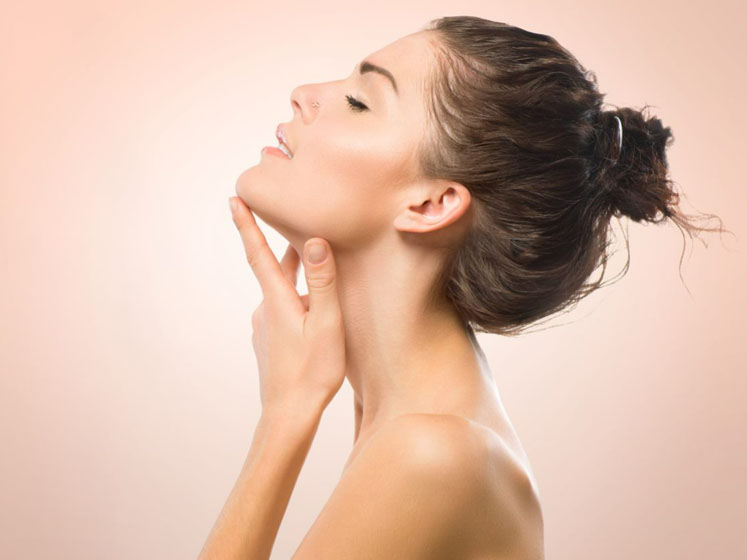Looking at those same shelves today, reports Jaume Reguant, Healthcare Director at Bioiberica, we see a different picture. In recent years, consumer interest in health has reached new heights and this engagement has only accelerated during the pandemic.
People’s perception of skincare has changed. Today, the belief that looking good equates to feeling good — and vice versa — has gained traction and this has set the scene for a boom in the skin and beauty market. As a result, we are seeing increased diversification in the skincare industry — both in terms of what consumers demand from products as well as the ingredients and formats available.
The rise of the “inside out” approach
This new inside out consumer approach to beauty has given rise to new and tasty types of skincare products: edible beauty and nutricosmetics. This growing market — valued at around $7million with an expected 8.05% CAGR between 2021 and 2026 — has opened a world of opportunity for product innovation, as consumers seek out convenient ways to boost their skin health.1
Many brands have been quick to adapt their product portfolios to meet this new demand. For manufacturers looking to stand out from competitor products and earn a regular place in shopping baskets, getting to the heart of what consumers want from their skincare is of paramount importance.
To help brands get into the mindset of today’s skin and beauty consumers — and develop products that meet or even exceed their expectations — this article will explore four key trends shaping the nutricosmetics market in 2022 and beyond.
Holistic health
As consumers become more health conscious, the holistic health trend is impacting all areas of wellness and nutrition. Consumers today recognise that supporting health in one area can produce benefits in another, and many are therefore adopting a more proactive approach to their long-term wellness.
In the skin and beauty market, we are already seeing the impact of this new way of thinking; the days of skin health only being a concern of the ageing population are well and truly over. Instead, consumers of all ages are now taking a much wider view of the factors that can impact their skin health.

Environmental issues such as stress, pollution and sun damage, for example, are now considered to be key perpetrators of skin damage. This presents an opportunity for manufacturers to appeal to consumers by refreshing their product messaging according to this evolving mentality.
Rather than using descriptors that conceptualise skin problems in isolation, such as “antiageing” and “antiwrinkle,” brands can instead employ more positive language such as “firming and contouring” or “nourishing and hydrating” to reflect consumers’ newfound desire to support overall wellness.
In addition, many consumers today see skin as an external reflection of how they feel internally; there’s an emerging belief that feeling good is equivalent to looking good, with 67% of consumers appreciating the link between good skin health and overall well-being.2
As a result, we are witnessing a shift in the types of skin health products demanded by consumers — with a move towards lifestyle-focused beauty. To take their product positioning to the next level and differentiate themselves from their competitors, manufacturers should not stop at updating beauty focused messaging; refreshing the ingredients label might also be in order.
By developing formulations with complementary ingredients such as vitamins and botanicals to target additional health areas — mood, sleep, stress and gut health, for example — brands can create cutting-edge lifestyle products that support the consumer quest for overall wellness, including improved skin health.
Edible appeal
As Dr Howard Murad, founder of the Murad brand, famously said: “Topical skincare products address only 20% of your skin. The other 80% is affected by what you eat and drink, including dietary supplements.” This belief still holds true in the public consciousness today as more and more consumers are recognising the importance of feeding the inside to nurture the outside, subsequently driving a rising demand for “edible beauty.”
This new trend first emerged in the Asian market where nutricosmetics made up almost half of the personal care market share in 2020, but it’s already making its way westward.1 In 2021, 60% of global consumers purchased food and drink products to improve their skin health — a trend no doubt accelerated by the pandemic.2
Initially, the lockdowns removed the expectation for consumers to keep up with their make-up routines and afforded them more time to focus on their skincare in lockdown.
Now, as life starts back up again, the aspects of a skincare regimen that are likely to continue are those that can be incorporated into consumers’ daily routines.
This shift has set the scene for brands to explore new delivery formats, including functional foods and innovative dietary supplements. Demand for such formats is ripe; in 2020, drinks accounted for the majority of the global nutraceuticals market, followed by capsules, tablets and softgels, with powders and gummies holding third and fourth position, respectively.3
By pushing the boundaries of what consumers have previously thought of as skincare, there is a clear opportunity for manufacturers to capitalise on the growing popularity of unconventional delivery formats.
Although supplement formats such as gummies already offer an attractive and convenient health boost, we could soon see collagen milkshakes and cookies fortified with hyaluronic acid play a central role in daily skin regimens.
However, taste and texture remain key to repeat purchase, so manufacturers must partner with the right suppliers to find innovative ingredients that provide the right organoleptic properties and efficacy at low doses to support easy formulation and bring their products to life. Armed with these tools, brands will be able to respond to the edible beauty trend and introduce new products to market.
Perfectly clear claims
As consumers become more health conscious, they are also becoming increasingly sceptical when it comes to product claims. Purchasing decisions often hinge on the promise(s) that a product makes. But, with thousands of products in the skin and beauty market making similar declarations, it can be difficult for brands to ensure that their products stand out from the competition.

One way to gain an advantage is to establish brand trust and credibility. In fact, in the age of the conscious consumer, scientifically backed claims are key to helping a product to gain traction; more than half of consumers state that scientifically backed ingredients are important to them when deciding to purchase a product.2 This means scientific substantiation should be an essential part of a product’s positioning.
For manufacturers, this underlines the need to work with ingredients that are both endorsed by science and also live up to their claims. It’s not enough to just have scientifically backed claims on a pack; raising awareness and educating consumers about the benefits of specific ingredients is crucial too, with nearly a third of today’s savvy consumers doing their own research into the efficacy of skincare ingredients before they buy.4
Sharing this kind of information at the point of purchase is key too. The challenge for brands, therefore, is to find more innovative ways to educate consumers about product benefits, especially on-pack, where space is limited.
Power in personalisation
As the skin and beauty market grows, it is important to remember that everyone’s skin is different. So, whereas a 10-step skincare routine may be the answer to healthy skin for some, others may demand a simpler and more effective way of maintaining their skin health.
Enter personalisation — a growing trend throughout the wider nutrition industry and one with particular relevance to nutricosmetics (given the breadth of skin concerns experienced by consumers). For example, many people seek out tailored solutions to conditions such as eczema and psoriasis.
Plus, there is a range of consumer groups with differing skin health needs (who do not suffer from specific skin health conditions) that offers further opportunity for personalisation and innovation. One example of this is menopausal skin; our expanding understanding of the skin changes that take place pre-, during and post-menopause is driving research into the ingredients with potential to alleviate common concerns.
And this tailored approach to skincare is not restricted to women; research also shows that more men are starting to engage with beauty and cosmetic products too (approximately 3% more than in 2018).
This presents an opportunity to develop products that address men’s specific skincare needs.5
In their efforts to meet this need, manufacturers can look beyond established skin health ingredients, such as collagen and hyaluronic acid, by combining them with other on-trend ingredients (probiotics, for example) to create innovative formulations that also target the microbiome to deliver enhanced benefits.
In fact, interest in such solutions is on the rise; 15% of consumers are already taking probiotics for their skin health.6 This is just one potential way to help skincare brands stay ahead of the curve. Forward thinking manufacturers need to consider the potential for cosmeceuticals to cross over into other hot-topic health areas such as digestive health or sleep, wherein consumers are now establishing links to skincare.
Conclusion
One thing is clear, the beauty from within market promises success to brands who not only get to the heart of what today’s consumer wants, but also push beyond the boundaries of traditional skincare. The recent swing towards a multifaceted approach to beauty has challenged manufacturers to ditch their old attitudes and instead view skincare through the wider lens of holistic health.
The most viable solutions are those that treat skincare as an extension of a person’s overall health and wellness, as well as being easily incorporated into daily regimens, making tenable claims and being tailored to specific consumer needs.
However, to gain buy-in, communication is more essential than ever; brands need to show that they are delivering convenient, targeted and effective skincare, in addition to substantiating the promises they make. There’s no one-size-fits all for beauty, and manufacturers who adapt with this in mind are likely to be at the forefront of innovation in the beauty from within space.
References
- www.reportlinker.com/p06062830/Nutricosmetics-Market-Growth-Trends-COVID-19-Impact-and-Forecasts.html?utm_source=GNW.
- https://fmcggurus.com/blog/fmcg-gurus-skincare-health-in-2021/.
- www.researchandmarkets.com/r/hnlxo8.
- https://store.mintel.com/report/uk-womens-skincare-market-report.
- www.gwi.com/connecting-the-dots.
- www.crnusa.org/resources/2020-crn-consumer-survey-dietary-supplements.




